
This article is translated from Sangeet Paul Choudary, known for his research in platform economics and network effects. In this article, Choudary explores how vertical AI and agents are reshaping the B2B workflow value chain. He argues that while most AI hype revolves around horizontal B2C applications, the real opportunity lies in vertical B2B AI.
Choudary believes that AI Agents create a possibility for reintegration scenarios. They enable vertical AI players to achieve horizontal development by coordinating across multiple workflows, which will reshape the B2B value chain. Especially in low interoperability fields like healthcare, AI startups can integrate different workflows using AI-native tools like AI Agents, thus gaining a dominant hub position in the industry.
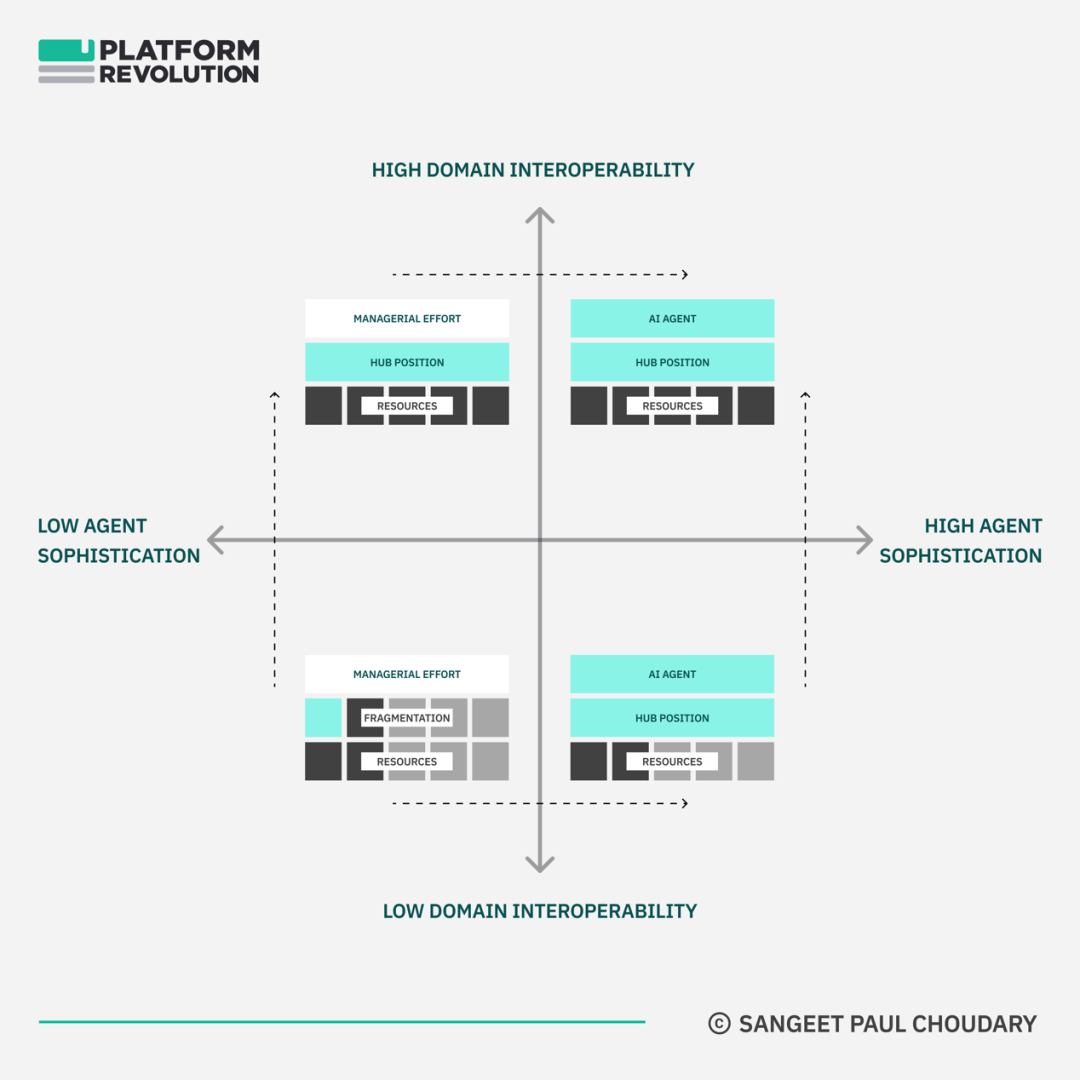
/ 01 /
Short-Term and Long-Term Games of Vertical AI
Today, most vertical AI players focus on developing vertical advantages through proprietary fine-tuned models and targeted user experiences. As I explained in How to Win at Generative AI, this advantage creates a flywheel:
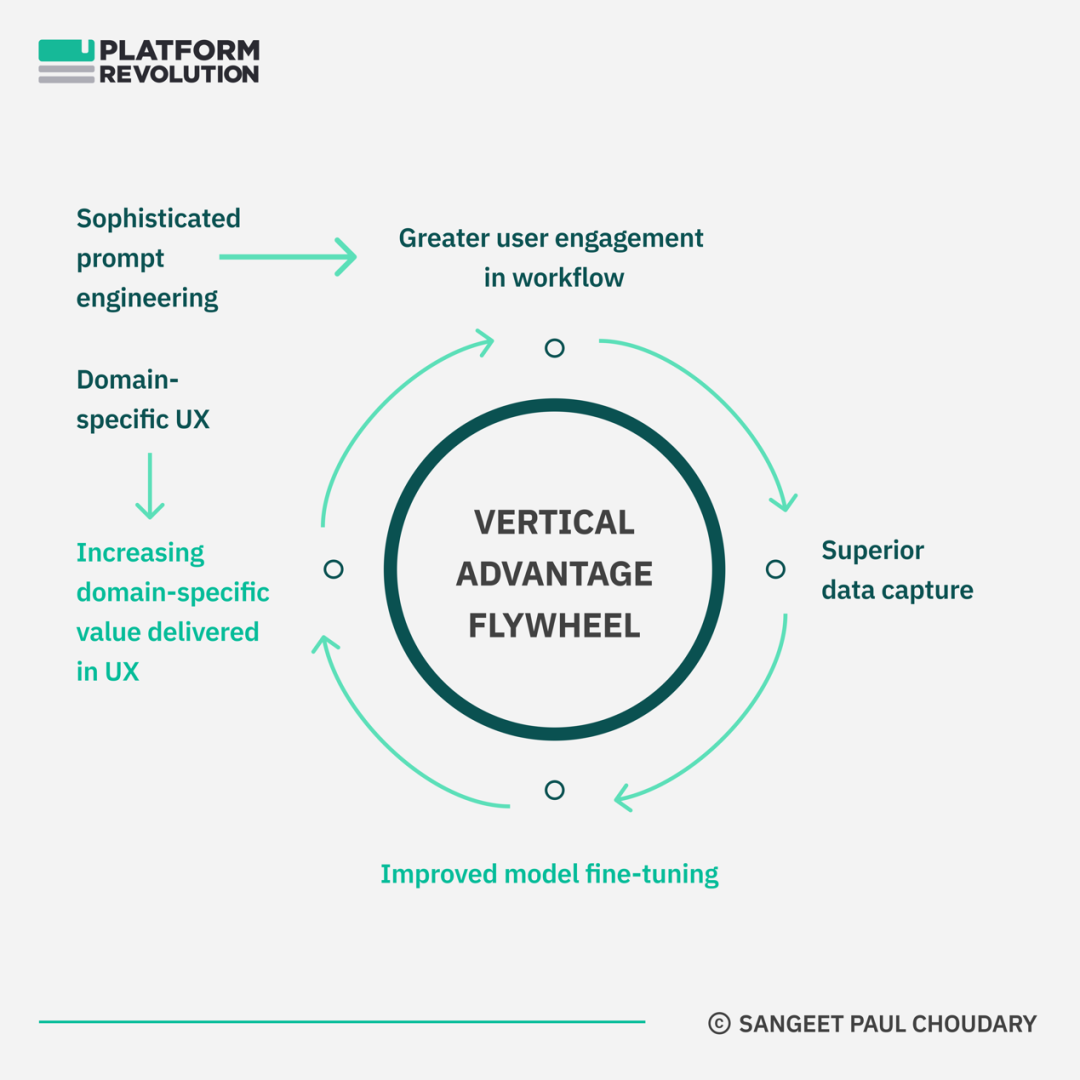
Smaller models trained on domain-specific data outperform larger foundational models in latency, accuracy, and cost. This verticalization has its own strong feedback loop; the more vertical the model you develop, the stronger your competitiveness across all parameters.
Over time, as models are fine-tuned more, future user experience changes should be more deeply coupled with the model to transmit the advantages of that model into user workflows.
The advantage of vertical AI players is that they operate as full-stack solutions—meaning they provide complete solutions across interfaces, proprietary models, and proprietary data. This continuously enhances the moat of the aforementioned flywheel, as the right to continue owning that interface allows tight players to continuously collect proprietary data, which helps further fine-tune models.
This is how to win the short game of vertical AI. However, it does not guarantee long-term victory.
Despite this flywheel, all vertical games will eventually participate in others’ ecosystems. This is the natural result of a surge in numerous vertical solutions. End users prefer to get work done through one or two interfaces, rather than jumping between various interfaces for each new use case.
For example, players like Square (starting with payments), Toast (starting with POS software), or ServiceTitan (starting with estimates) have followed this strategy for growth.
Ultimately, all vertical games seek horizontal development. The reasoning is as follows:
Most disruptions to the status quo happen through deep dives into niche scenarios, but most venture capital returns are realized through integration; to capture value at scale, software companies need to continuously extend scenarios.
As I explained in How to Win at Generative AI:
Splitting does not capture sustainable value. Splitting replaces existing businesses but does not create scalable and defensible pools of value. Only by re-bundling various fragmented functionalities into a cohesive, customer-centric product can value maximization be achieved. Most importantly, in this process, successful ‘integrators’ establish central positions and gain primacy in user relationships.
Many venture capitals chase innovators in niche scenarios because innovators reconstruct the industry chain and participate in the reallocation of industry chain value. However, most of the benefits will ultimately be taken by a few ‘integrators,’ and thus most venture funds will suffer losses. This is the final game of vertical AI.
From this perspective, AI creates new possibilities for scenario reshaping. The opportunity to create long-term competitive advantages in vertical AI does not lie in effectively addressing the initial pain points. Many participants will successfully create proprietary, fine-tuned models to solve this problem. This is a necessary requirement, but not sufficient.
The long-term competitive moat in vertical AI lies in reshaping a core scenario by leveraging the unique value offered by AI and extending around that core scenario. AI creates a new possibility for scenario reshaping, and those who can effectively leverage it to solve specific scenario problems will be the ones to dominate vertical AI.
/ 02 /
How AI Reshapes Workflows
Business workflows are scattered across various isolated software. To truly get work done, these workflows must be reintegrated to achieve business goals. You obtain the outputs of workflows X, Y, and Z and make decisions or take actions to achieve goals. This goal-oriented workflow integration is executed by human managers.
Managers in organizations achieve this integration by addressing two issues: firstly, cross-scenario workflow coordination; secondly, using different workflows to achieve organizational goals;
In today’s B2B workflows, management resources in organizations serve as the points of reintegration.But technology is changing the landscape of B2B workflows in two very important ways.
1) Enhanced Interoperability
First, as we increasingly use API-based business function distribution, interoperability among different workflows will also enhance. I elaborated on this in my article on DX as the New User Experience:
Business capabilities are increasingly opened up for external use through APIs. APIs provide interfaces for business processes or functions while also defining the contracts involved in that interface.
APIs are the pipelines through which capabilities can flow across enterprise boundaries. As these pipelines increase, they create tremendous opportunities for pipeline engineering. Different pipelines can be connected through innovative business logic to create entirely new workflows and functionality packages. Therefore, we see two significant changes occurring in workflow reintegration.
Firstly, companies like Salesforce and Hubspot are central in workflows, integrating other participants to create seamlessly integrated workflows.
Secondly, companies like IFTTT and Zapier allow users to create workflows based on if-then triggers, combining across multiple workflows. Both solutions address the pipeline issue of coordinating different workflows.
2) The Rise of AI Agents
Enhanced interoperability resolves the pipeline issue, but it does not address the goal-seeking problem. This is where AI agents create unique opportunities for vertical AI.
AI agents address the goal-seeking problem. As I explained in my article on AI, AI won’t take your job, but it will take your salary:
Agents pursue goals, which sets them apart. While most technologies aim to perform tasks, agents go beyond tasks to accomplish goals. In an environment where companies increasingly configure APIs to serve critical resources and functions, agents execute the above three functions as follows:
1) Scan the environment: Scan the environment and identify available resources (including third-party APIs).
2) Plan and deconstruct: It plans and deconstructs the goal into constituent tasks and execution sequences.
3) Execute the plan: Agents utilize available resources (including third-party APIs) to execute the plan and achieve the goal.
In practice, agents reintegrate workflows across APIs to achieve end results. This is a powerful new performance vector.
The most powerful outcomes of vertical AI will be observed in highly interoperable fields, where complex and well-trained agents operate on open resources. Agents create a new scenario for reintegration. They enable vertical AI players to achieve horizontal development by coordinating across multiple workflows.
This is already happening. Check out the Twitter post about executing API self-learning agents (SLAPA) released in March 2023:
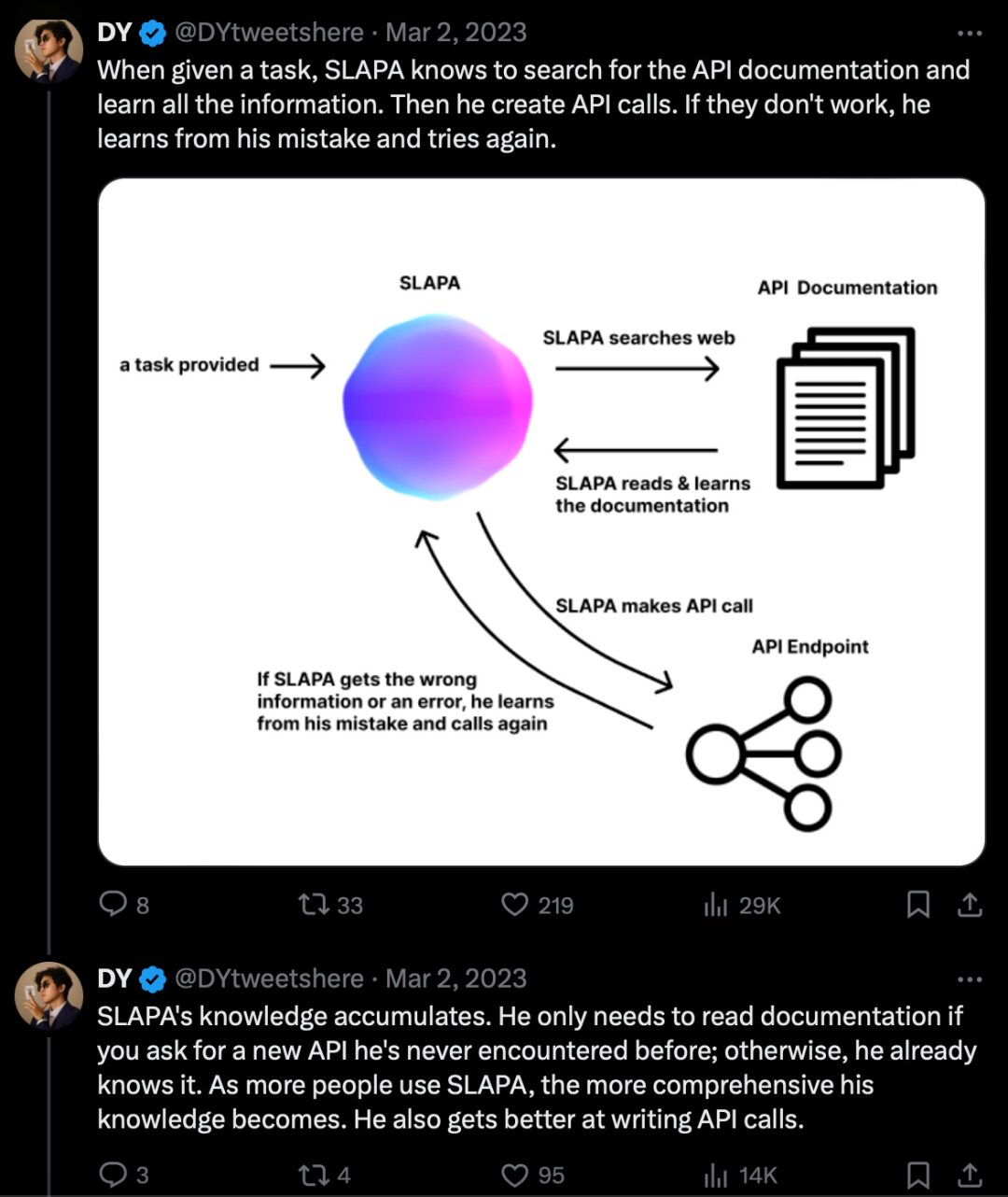
/ 03 /
Integration Capabilities of AI Agents
Most software focuses on automating tasks within workflows, while AI agents recombine tasks to achieve goals. As I explained in How AI Agents Rebuild Organizations:
Every goal consists of a set of tasks. Management roles—responsible for getting work done within organizations—are a series of goals. When technology replaces the underlying tasks (as shown in the red box below), as long as goal-seeking remains crucial to the performance of the role, the scope of the role is essentially unaffected.

Let’s take travel planning as an example. With the emergence of new tools—travel booking tools, calendar management tools, payment tools, etc.—specific tasks are simplified and even replaced by technology, but the goals of those tasks are still managed by humans.
AI agents are different; they can directly achieve goals. If an agent receives a goal, that goal no longer needs to be executed by staff. In fact, goal-seeking AI agents can decouple goals from roles. AI agents create a new trajectory for rebundling.

Vertical AI players have a unique opportunity, and this opportunity is not limited to developing proprietary fine-tuned models. The real opportunity lies in leveraging AI agents as new rebundling points to integrate different workflows and coordinate workflows.
/ 04 /
Vertical AI Opportunities: Winners and Losers
What factors determine the winners and losers in vertical AI? Vertical AI—utilizing agents to rebundle workflows—effectively replaces management resources within the organizational environment.
To understand how vertical AI participants compete, consider the factors that determine the effectiveness of any management resource in an organization: 1) The management capabilities required to get work done; 2) Easy access to the resources needed to complete the work.
Similarly, the ability of vertical AI to successfully serve as a rebundling point depends on two key factors: 1) The complexity of AI agents; 2) The interoperability and open access level of third-party resources in the relevant field.
Thus, not all vertical industries are equally suitable for vertical AI opportunities. The extent to which vertical AI creates value depends on the positioning of specific use cases in the competitive environment as shown below.
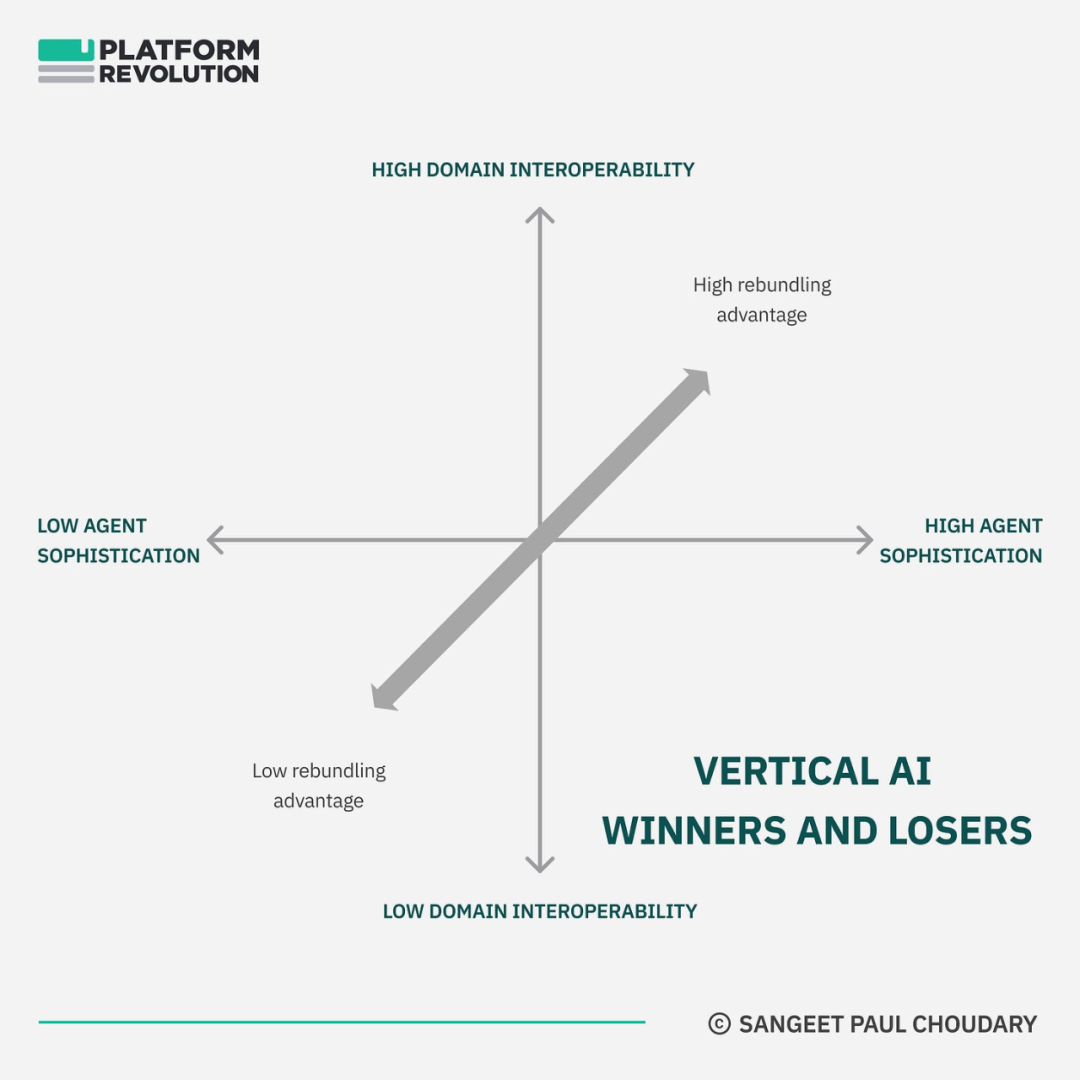
Vertical AI participants benefit from high rebundling advantages in fields with high interoperability and high agent complexity. Most industries today operate in one of the other three quadrants, lacking domain-level interoperability and/or agent complexity.
Given this reality, some industries and fields naturally favor existing enterprises. In highly interoperable fields, SaaS operators have successfully established hub positions, and this is likely to occur. In contrast, vertical AI newcomers have stronger entry points in low interoperability fields.
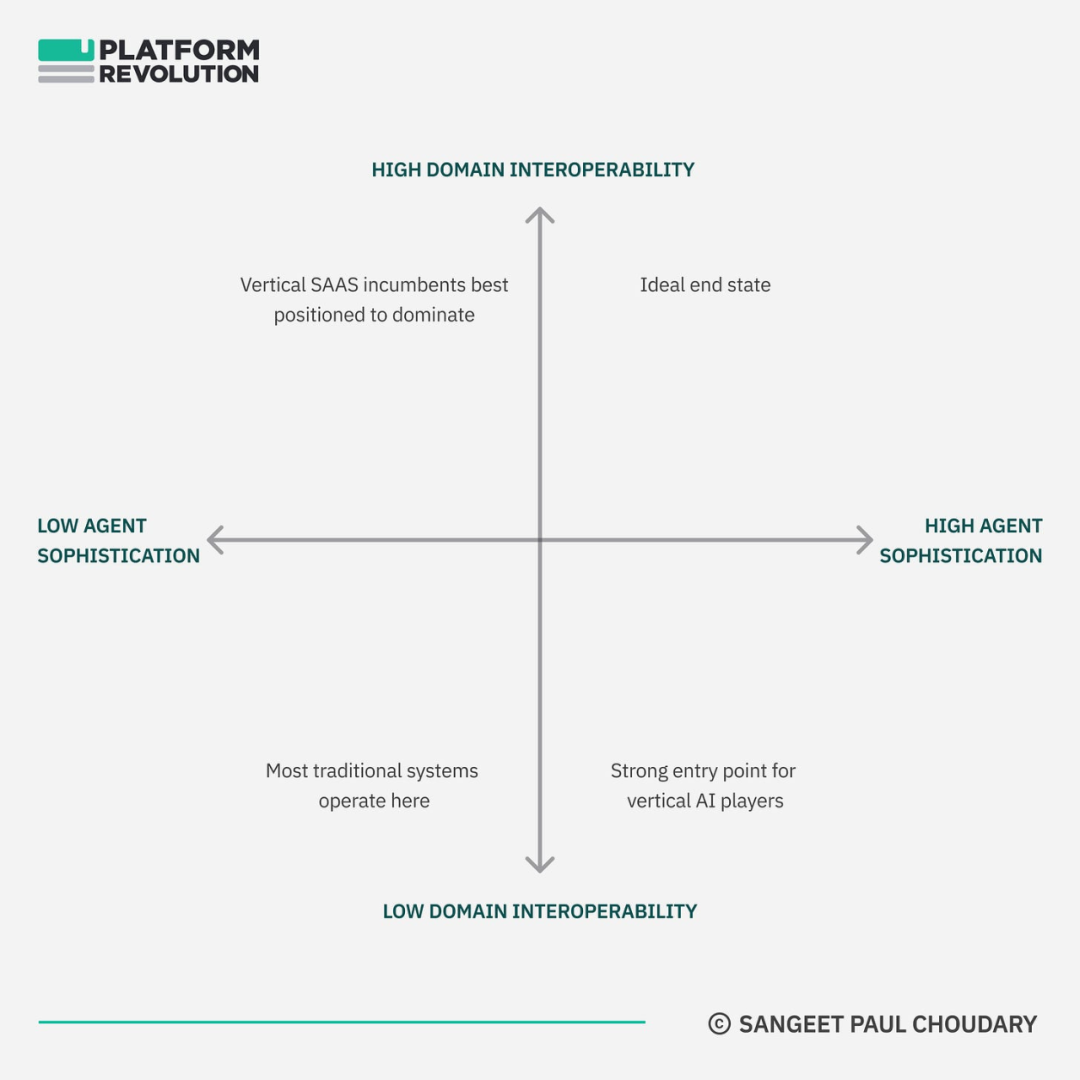
/ 05 /
Who Will Win in B2B Workflows
The starting point is in the lower left quadrant, involving a situation where users apply management work across multiple B2B workflows that do not interact with each other, with interfaces and resources fragmented.
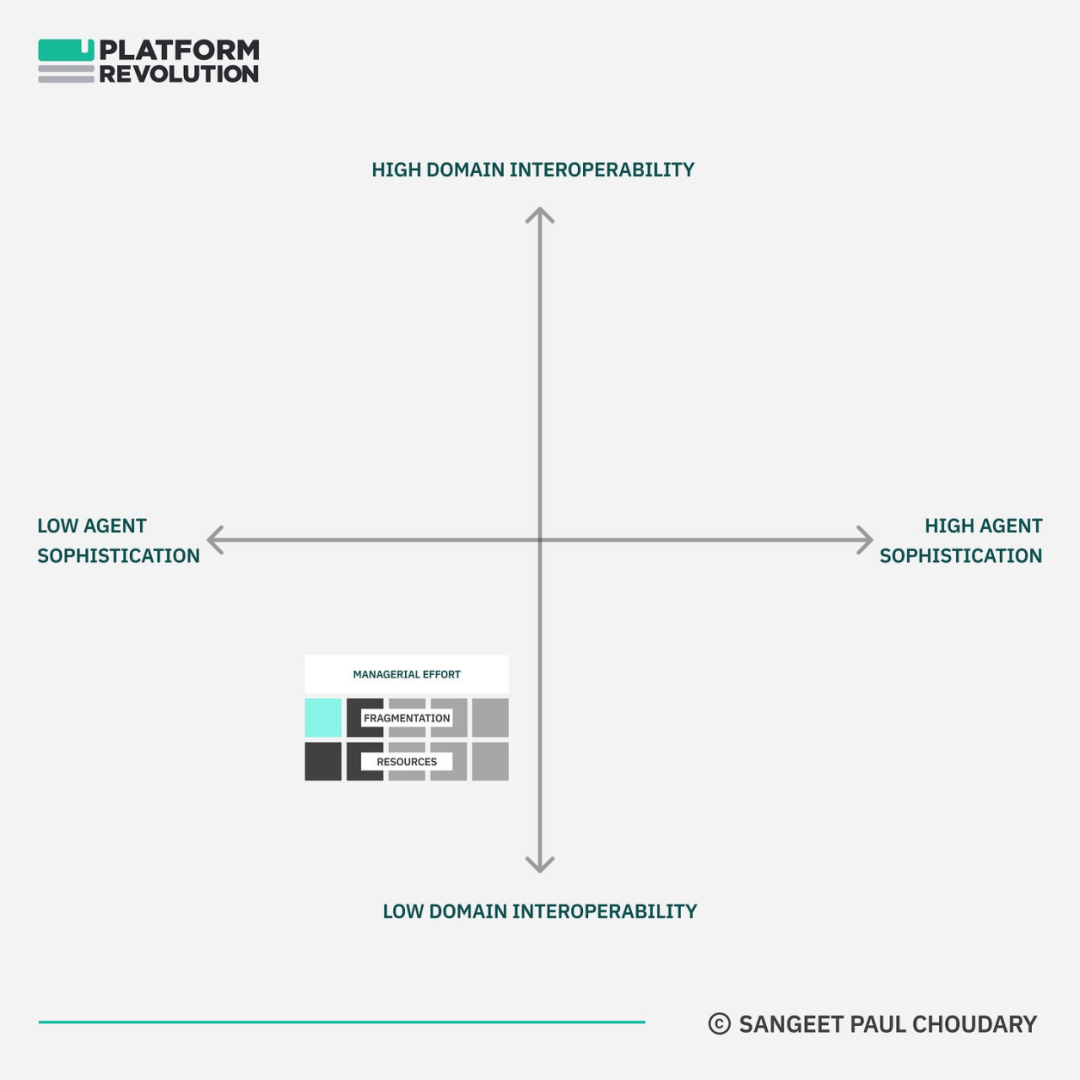
As domain interoperability or agent complexity increases, this fragmentation is addressed by specific participants establishing central positions.
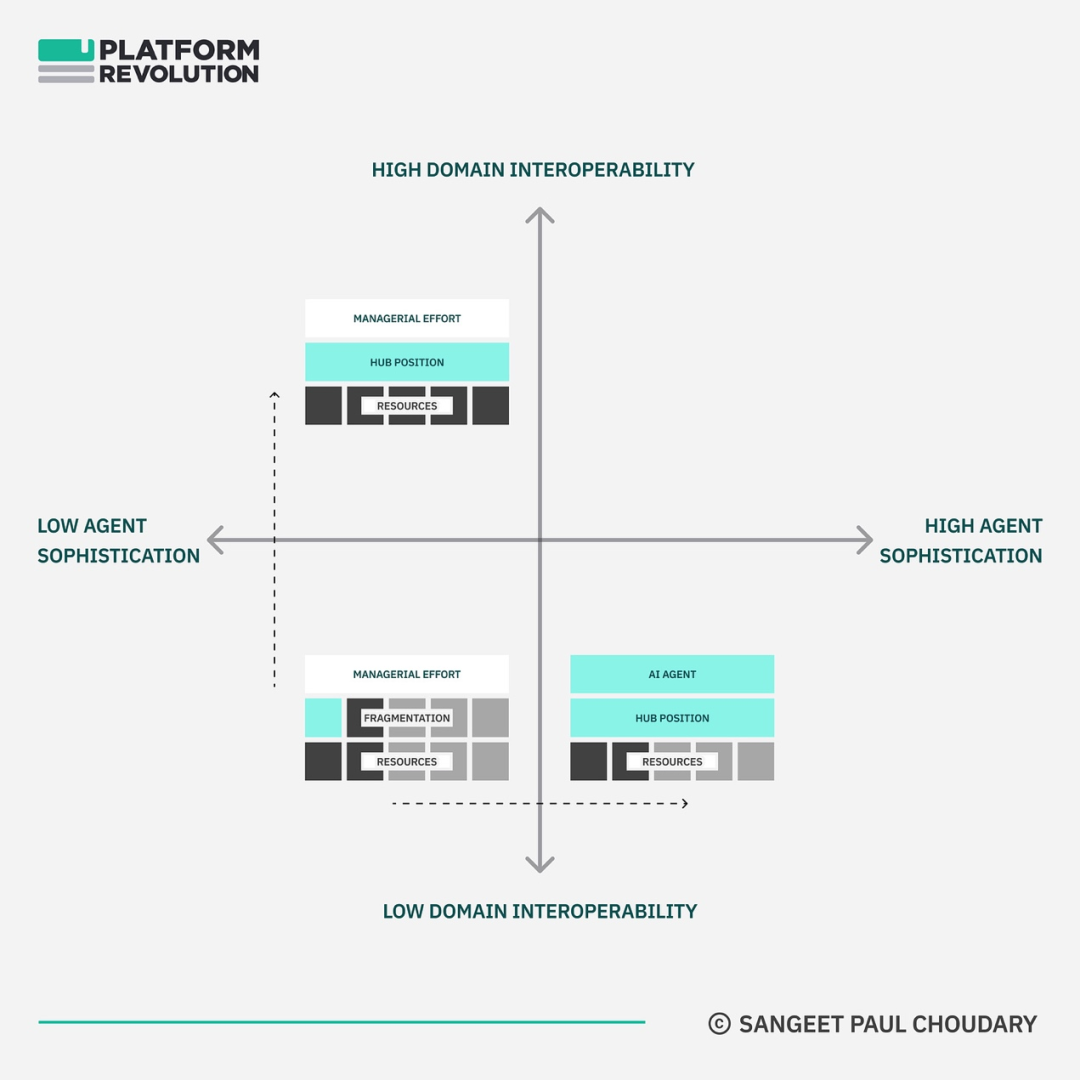
As interoperability enhances, central positions are achieved through API integrations. As the complexity of AI agents continues to rise, this central position is realized through agents taking over management work, with users primarily engaging in workflows through agents.
Ultimately, these paths converge to a final state of high agent complexity and high interoperability.
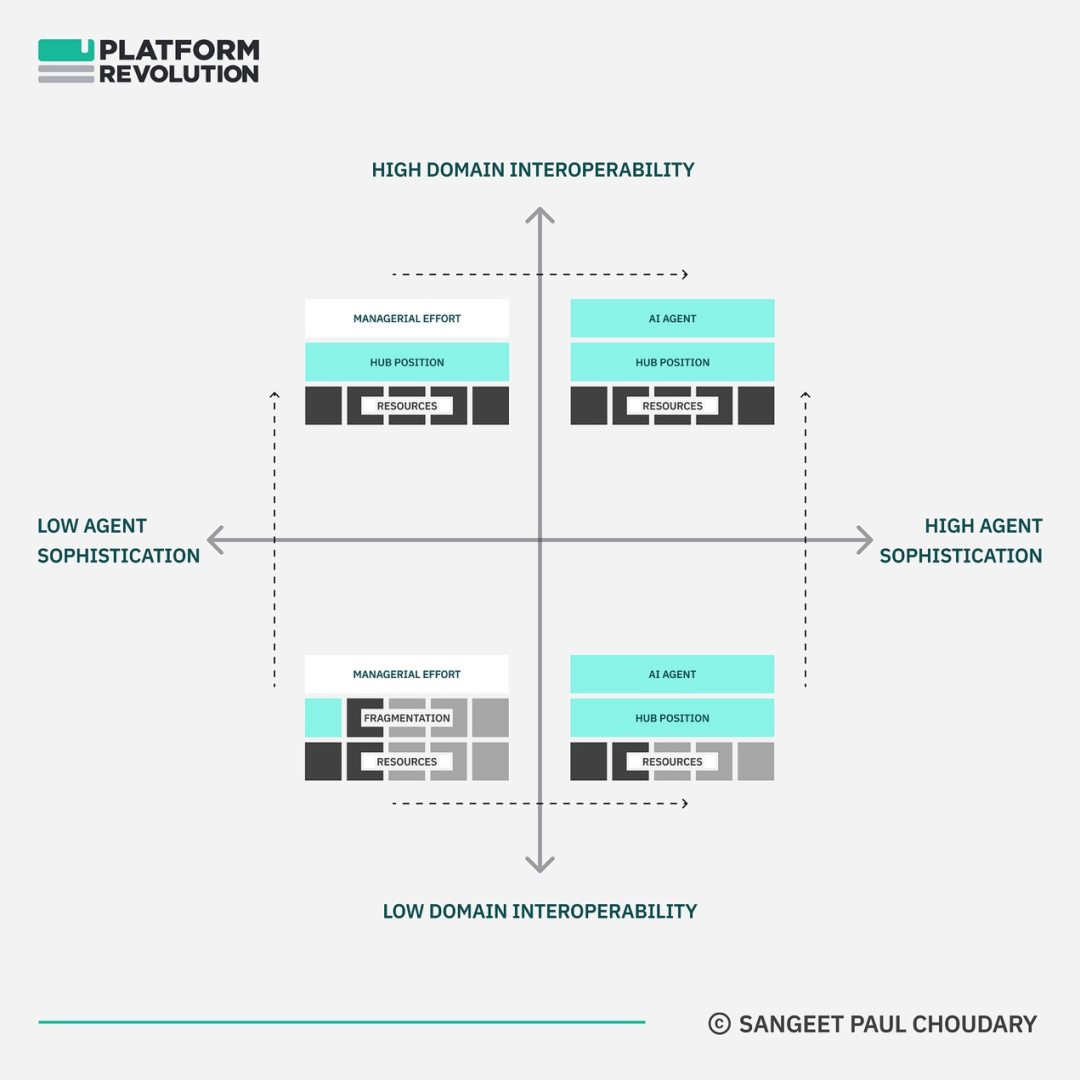
Currently, most SaaS companies that have opened APIs already have well-established workflow centers. Companies like Toast, Shopify, Hubspot, and Salesforce have successfully established their central positions as various functionalities around them become available in API form. By obtaining the rights to customer relationships and core data identifiers (such as Salesforce ID), they have rebundled all other workflows around this core position (via API integration).
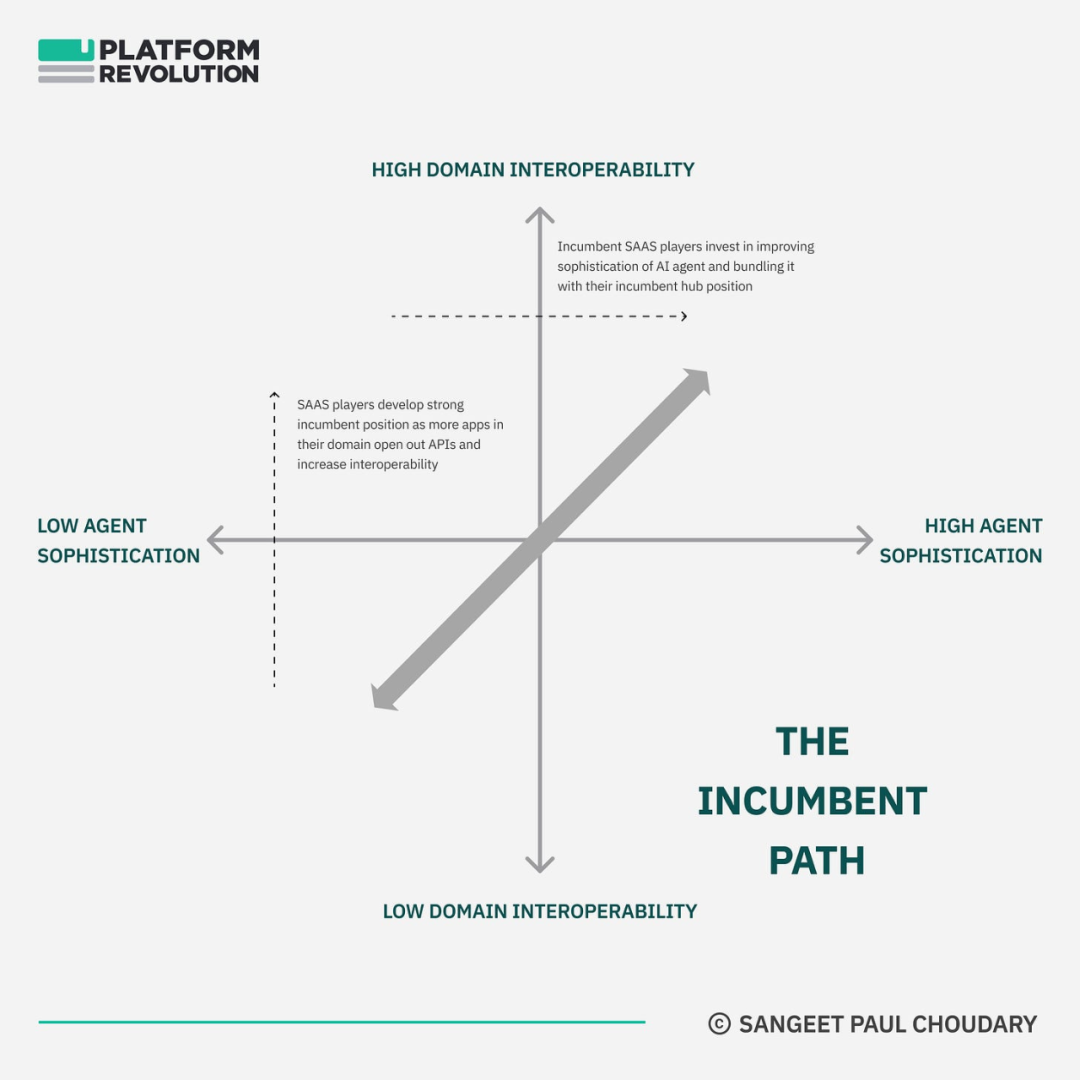
These existing enterprises are well-positioned to leverage their dominant hub status and bundle AI agents on top. All the resources and capabilities of agents are already well-integrated into the hub position. Customer relationships belong to the workflow center. Agents are merely bundled to this position to strengthen the incumbents’ status.
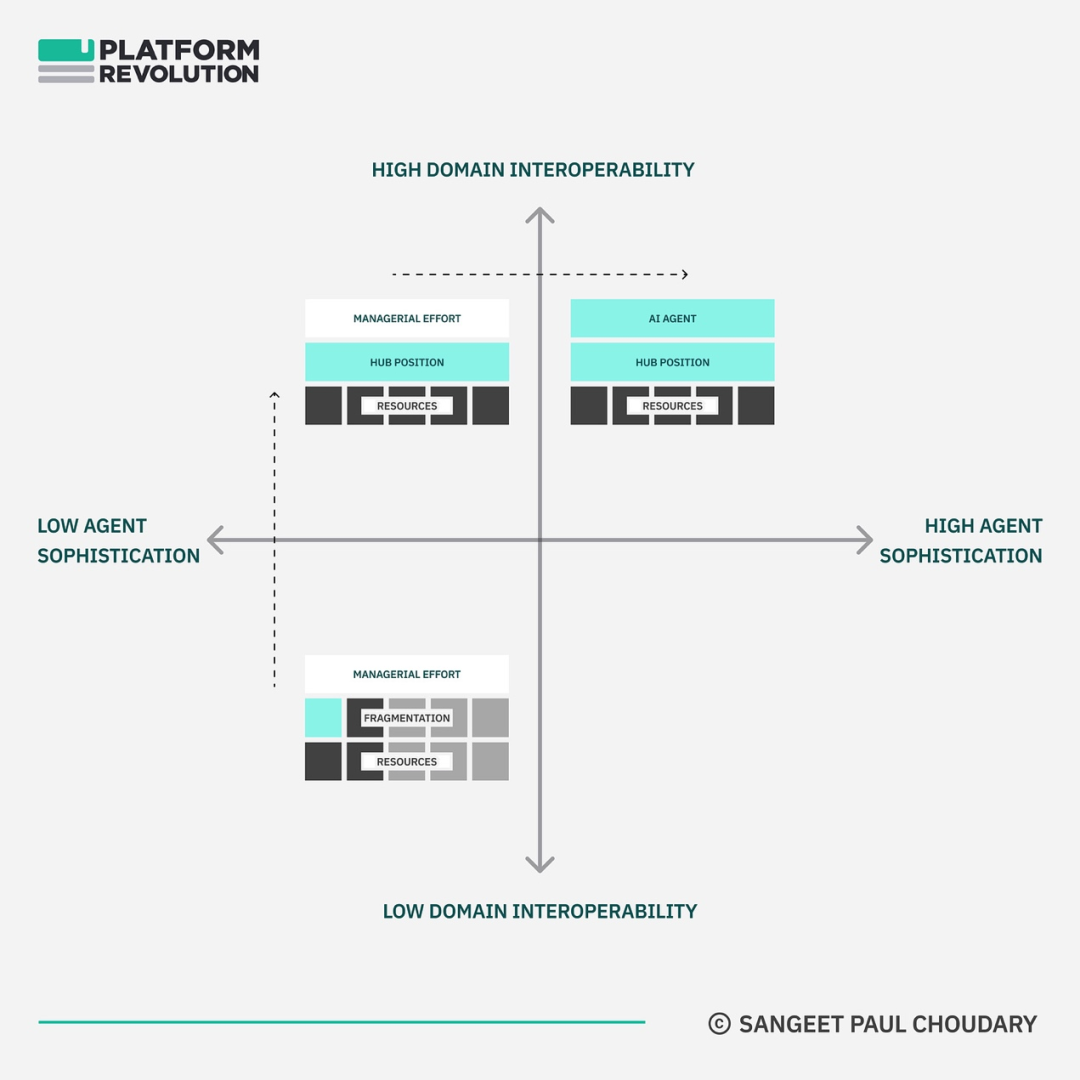
But this does not mean that vertical AI startups have no advantages; on the contrary, the advantages of vertical AI will favor startups in fields with low interoperability to date.
Advanced AI agents created in these fields change the status quo. If such agents effectively attract customer relationships and increasingly begin to operate as workflow centers, the motivation for other participants to open APIs and provide their capabilities and resources will increase as customer relationships and workflows begin to operate around AI agents.
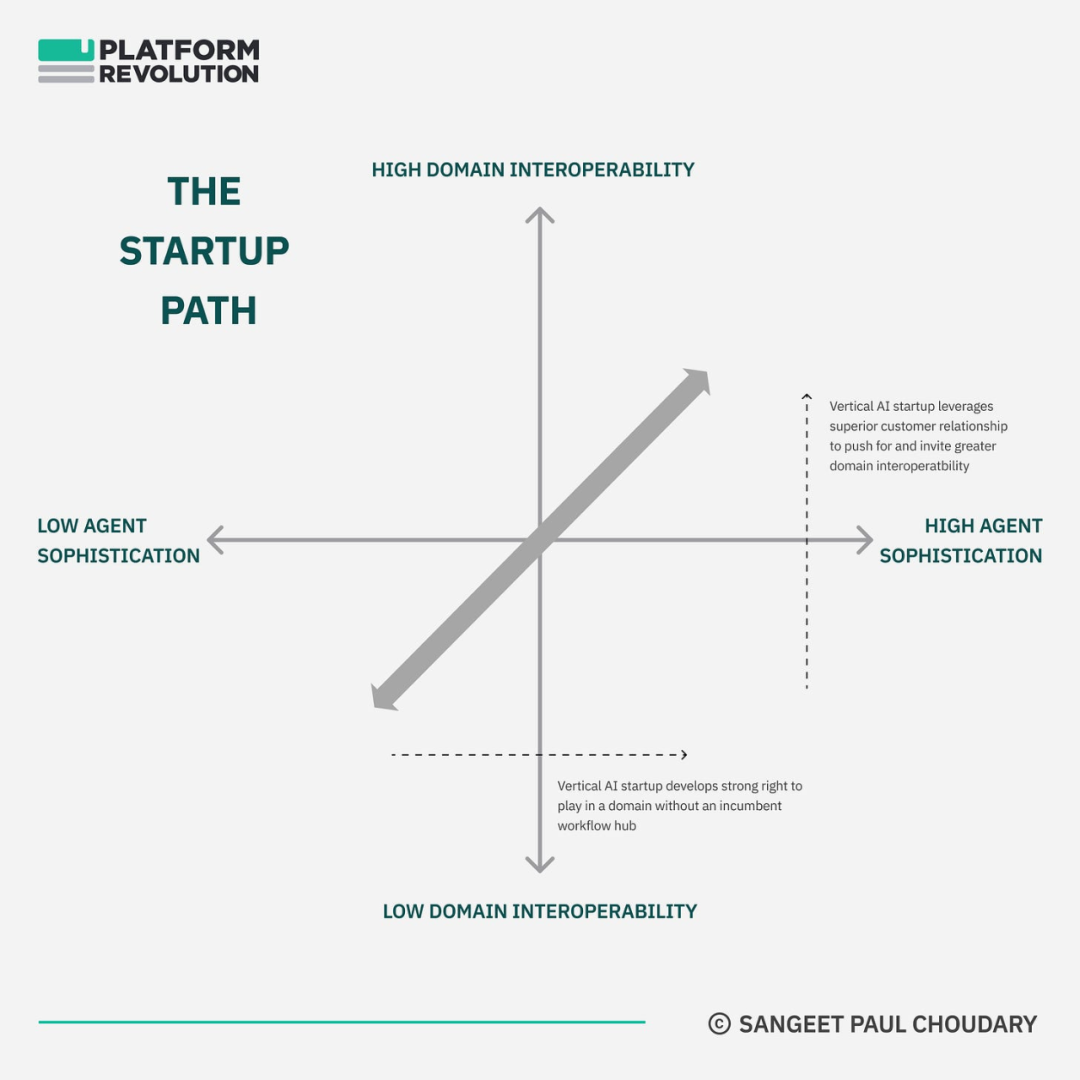
For example, consider industries like healthcare, where domain interoperability is very low. AI agents emerging to facilitate home care for chronic disease patients may create the necessary attraction for various participants to open APIs and resources to benefit from the growing demand in the home care market.
In the long run, the ultimate goal of vertical AI is to develop horizontal advantages, not as horizontal AI, but as horizontal hub positions. As we have seen above, this hub position is best established by leveraging agents. Agents provide unique AI-native tools for rebundling.
As I explained in How to Win at Generative AI, the overall pattern is as follows:
Step 1: Leverage Horizontal to Achieve Vertical
A series of “startups” emerge at the workflow level to verticalize this horizontal model. You need a unique understanding of vertical customer problems to start from here.
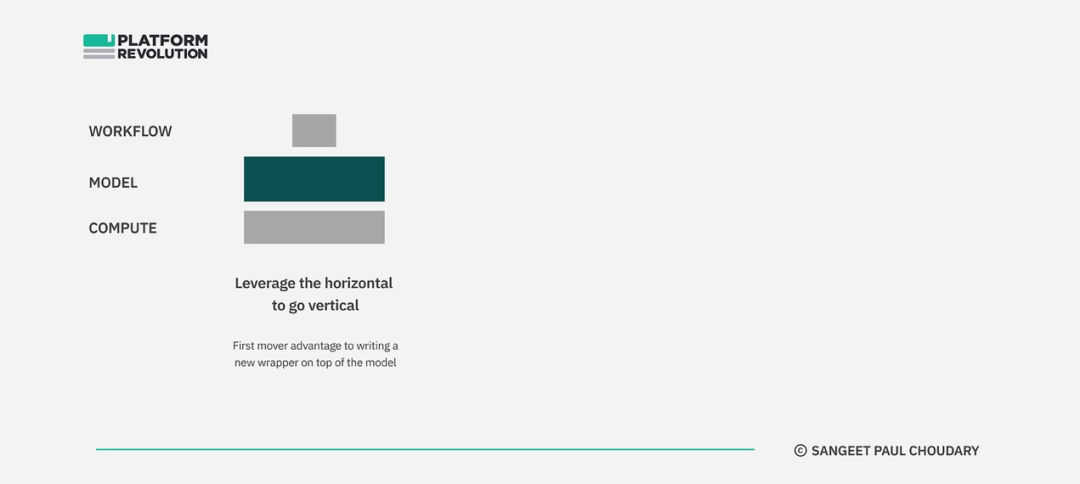
Step 2: Develop Vertical Winning Powers
Develop some form of vertical advantage (proprietary fine-tuned models, access to vertical datasets, user experience advantages specific to vertical industries, or some combination of the above advantages) and leverage that advantage to pull value into the vertical industry. You can establish an advantage by creating a full-stack vertical solution that integrates across models and workflows.
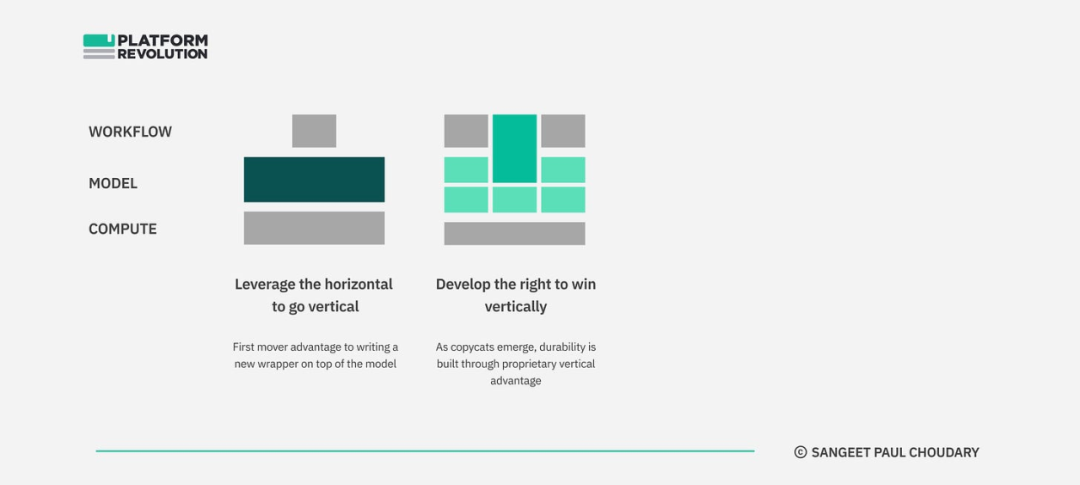
Step 3: Develop Horizontal Winning Powers
After developing vertical advantages, very few companies that succeed in Step 2 will find themselves with a critical control point through vertical specialization—this advantage will give them primacy in user relationships in that vertical space. These few companies will leverage this newly developed control point to begin “accelerating” reorganization. The unique advantage provided by AI here is rebundling with AI agents.

Step 4: Move Horizontally from Vertical
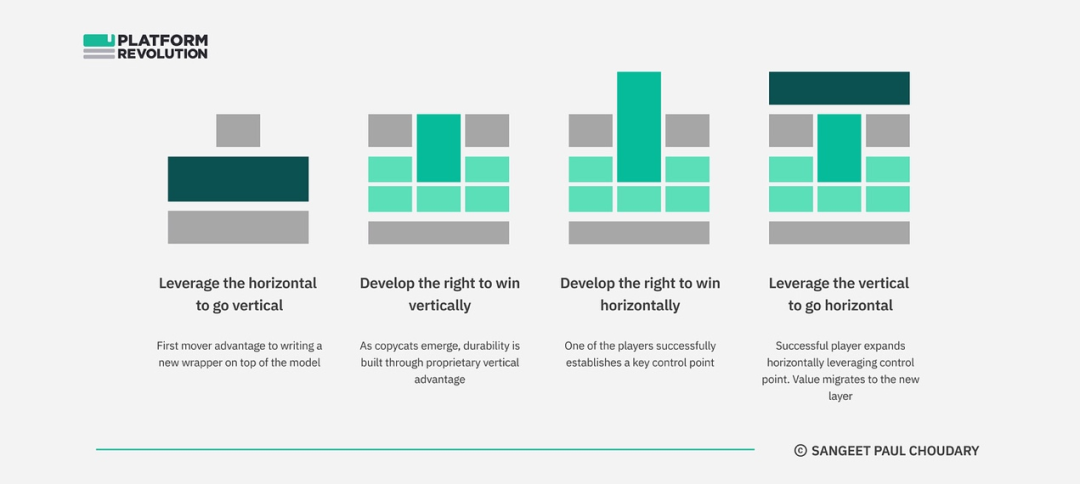
As rebundling progresses around the control point, the player now becomes the hub connecting other players. It successfully creates a “top-level” layer that coordinates multiple functionalities. As the complexity of agents increases and domain interoperability improves, the horizontal power of that player will increase.
PS:If you have unique insights into the field of AI large models, feel free to scan the QR code to join our large model discussion group.
